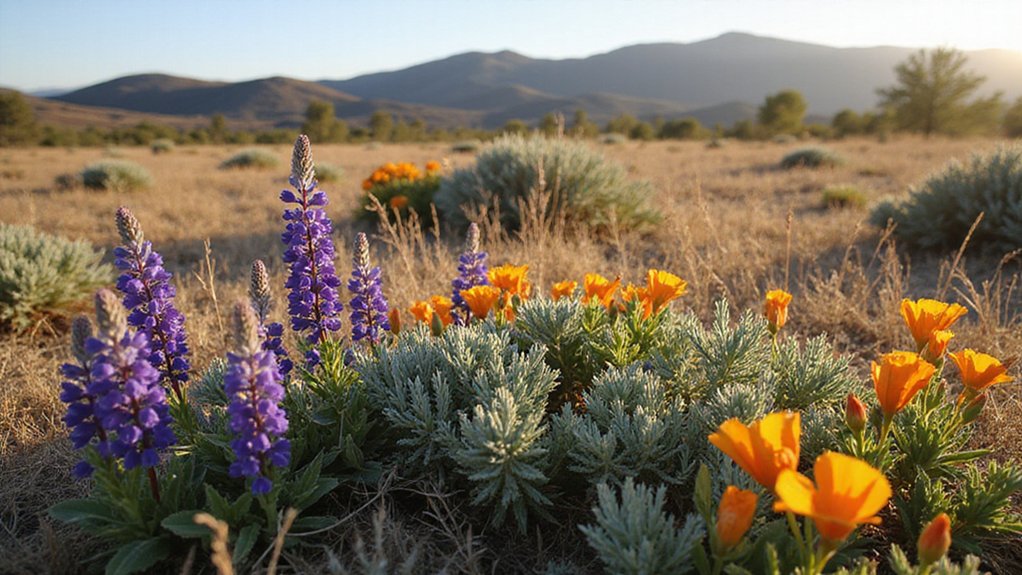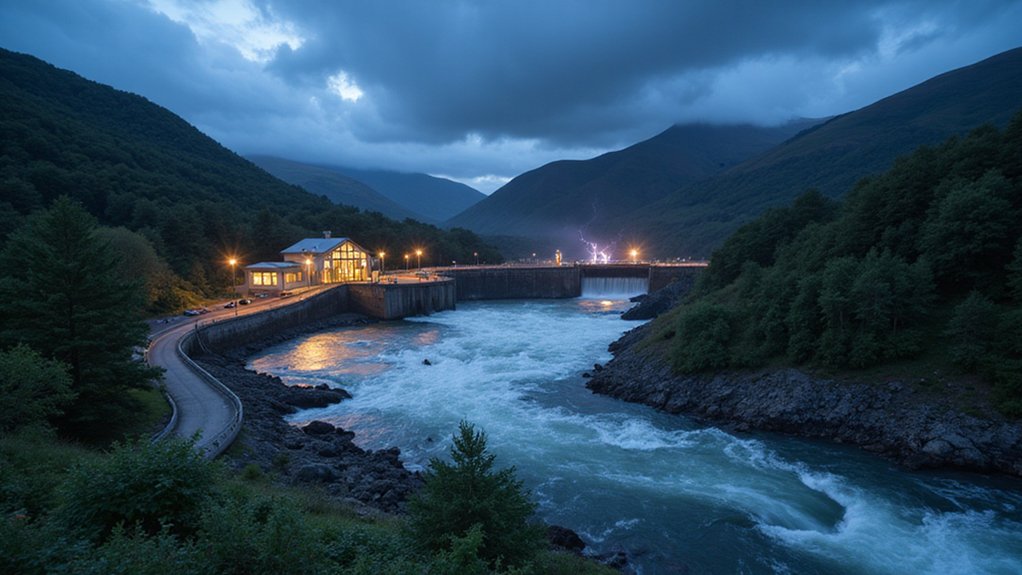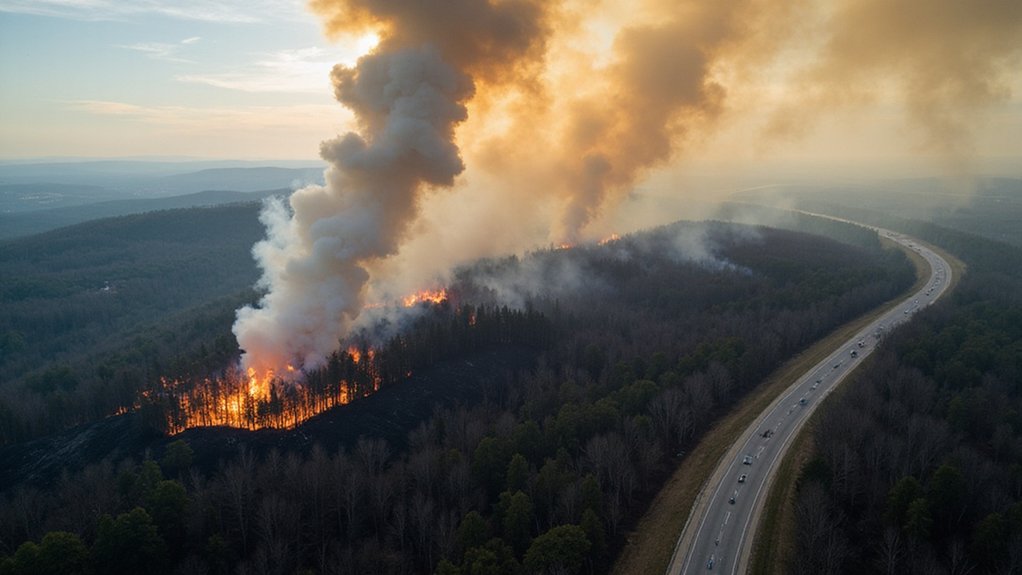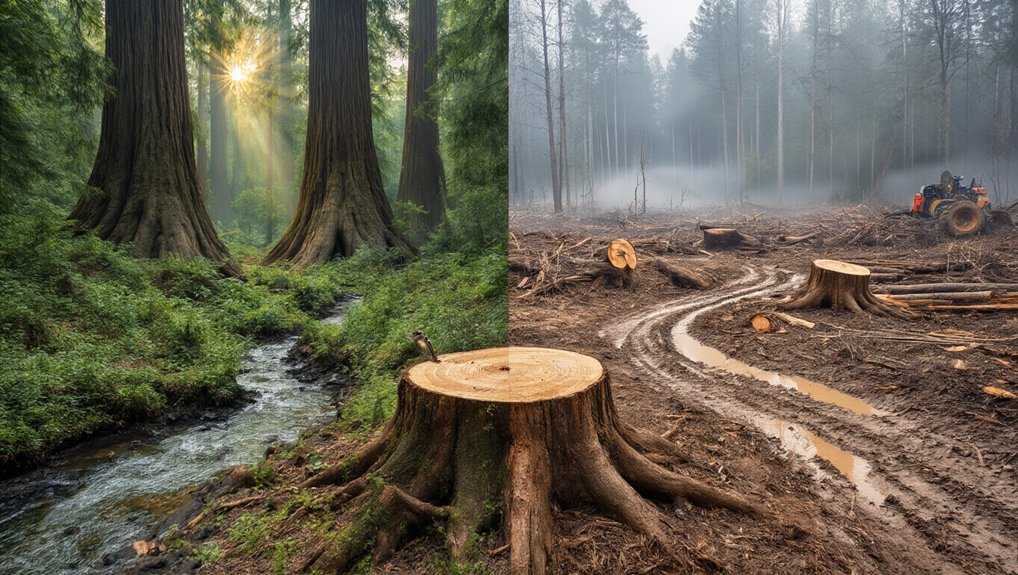While California burns through billions fighting wildfires each year, the state’s best defense might already be growing in its own backyard. Native plants, those unglamorous locals that evolved here over millennia, are proving to be nature’s own fire suppressants.
The math is simple. Invasive grasses create what firefighters call a “continuous fuel bed”—basically a highway for flames. Native plants? They grow in patches. They hold moisture. They don’t burn like gasoline-soaked newspaper. Communities that restored their native vegetation are seeing fewer devastating fires than those overrun with invasive species. Funny how that works.
Native plants grow in patches, hold moisture, and don’t burn like gasoline-soaked newspaper.
These invasive grasses, particularly bromes and other annuals, have turned California into a tinderbox. They dry out, create tons of fine fuel, and spread fire faster than gossip in a small town. Native shrubs and perennials, meanwhile, burn less readily and create natural firebreaks. They also prevent that nightmare scenario where ground fires climb into tree canopies—what experts call the “fire ladder effect.”
The ecological benefits pile up like evidence in a courtroom. Native plants stabilize soil, preventing those deadly post-fire mudslides. They maintain biodiversity essential for ecosystem recovery. They create microclimates that stay moister and less flammable. Plus, they support the pollinators and wildlife that keep the whole system running. It’s almost like they belong here or something.
Cities and counties are catching on. Native plant buffer zones around developments are becoming standard practice. Some jurisdictions now require native landscaping in fire-prone areas. Public gardens push native plant education. Even homeowners are ditching their water-sucking, fire-loving exotic plants for natives that actually protect their property. On Catalina Island, 35% coverage of invasive grasses has created an urgent need for large-scale restoration.
Restoration projects combine native seeding with prescribed burns and managed grazing. Fuelbreaks use native plants to slow fires without destroying ecosystem integrity. Mechanical thinning targets invasives while preserving native vegetation mosaics. Road corridors seeded with natives disrupt the continuous grass cover that turns highways into fire highways. Yet some proposed fuelbreak treatments threaten 94 rare California native plant species, undermining the very biodiversity that makes ecosystems fire-resilient.
California doesn’t need another expensive technological solution. The answer has been here all along, patiently evolving, waiting for humans to notice. Native plants: cheaper than helicopters, more reliable than luck.
References
- https://www.cnps.org/conservation/environmental-impacts-31666
- https://oehha.ca.gov/sites/default/files/media/downloads/climate-change/document/04wildfires.pdf
- https://catalinaconservancy.org/stories/how-native-plants-help-protect-catalina-from-wildfire/
- https://sbbotanicgarden.org/insight/fire-and-native-plants-build-resilient-community/
- https://www.cnps.org/conservation/fire








